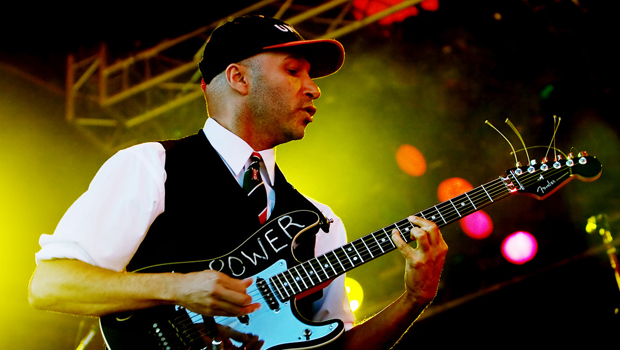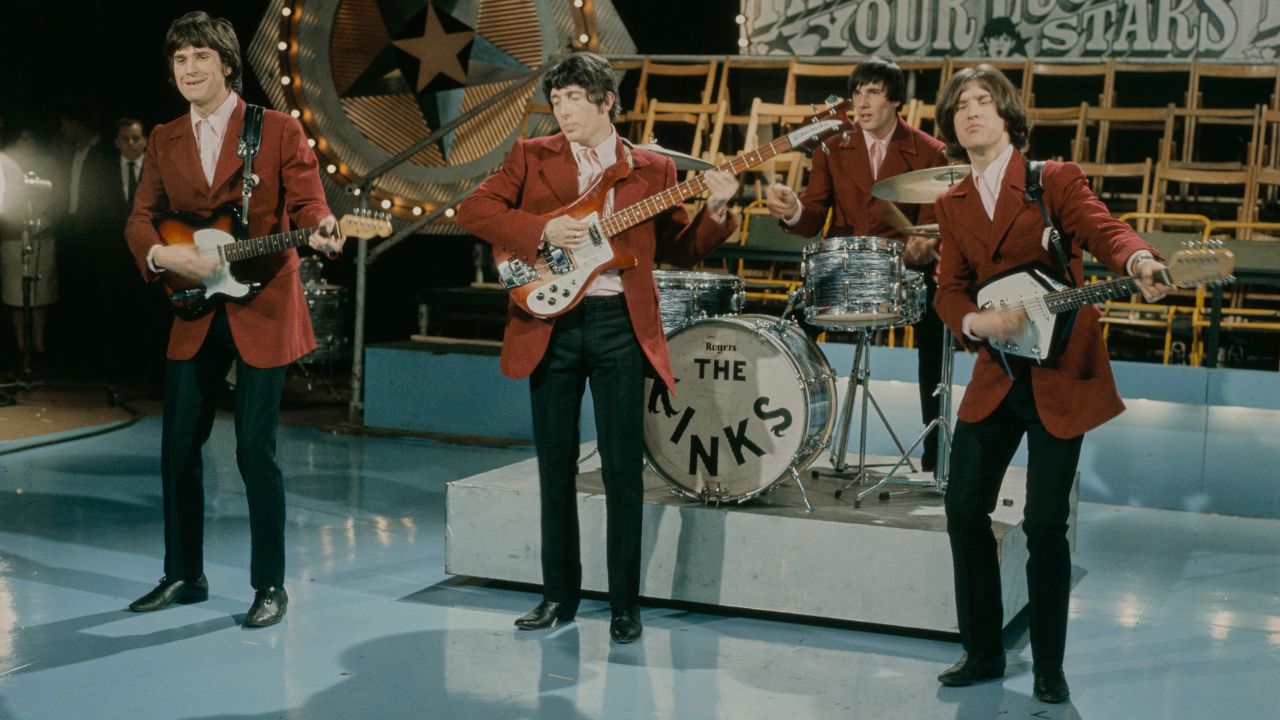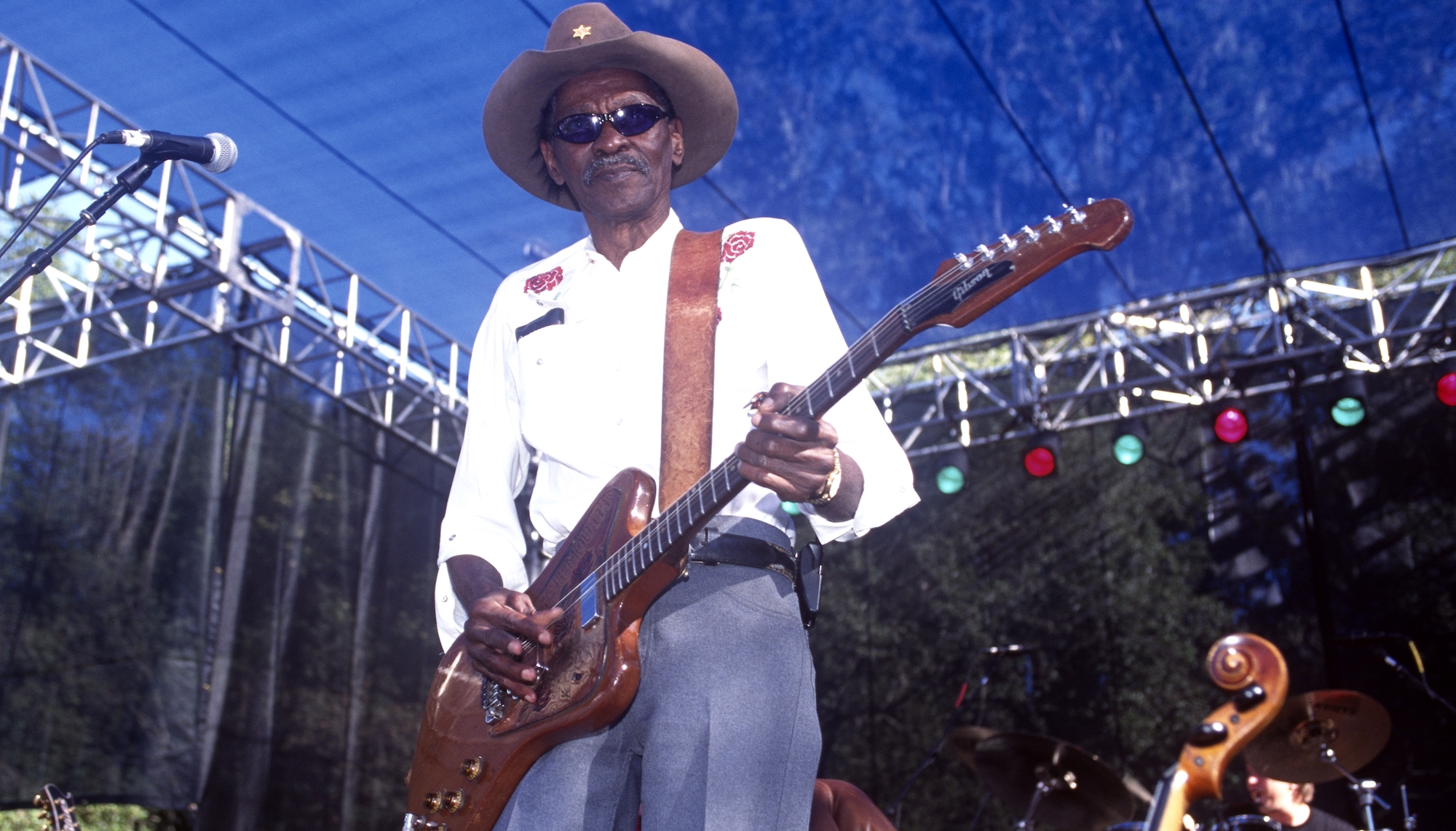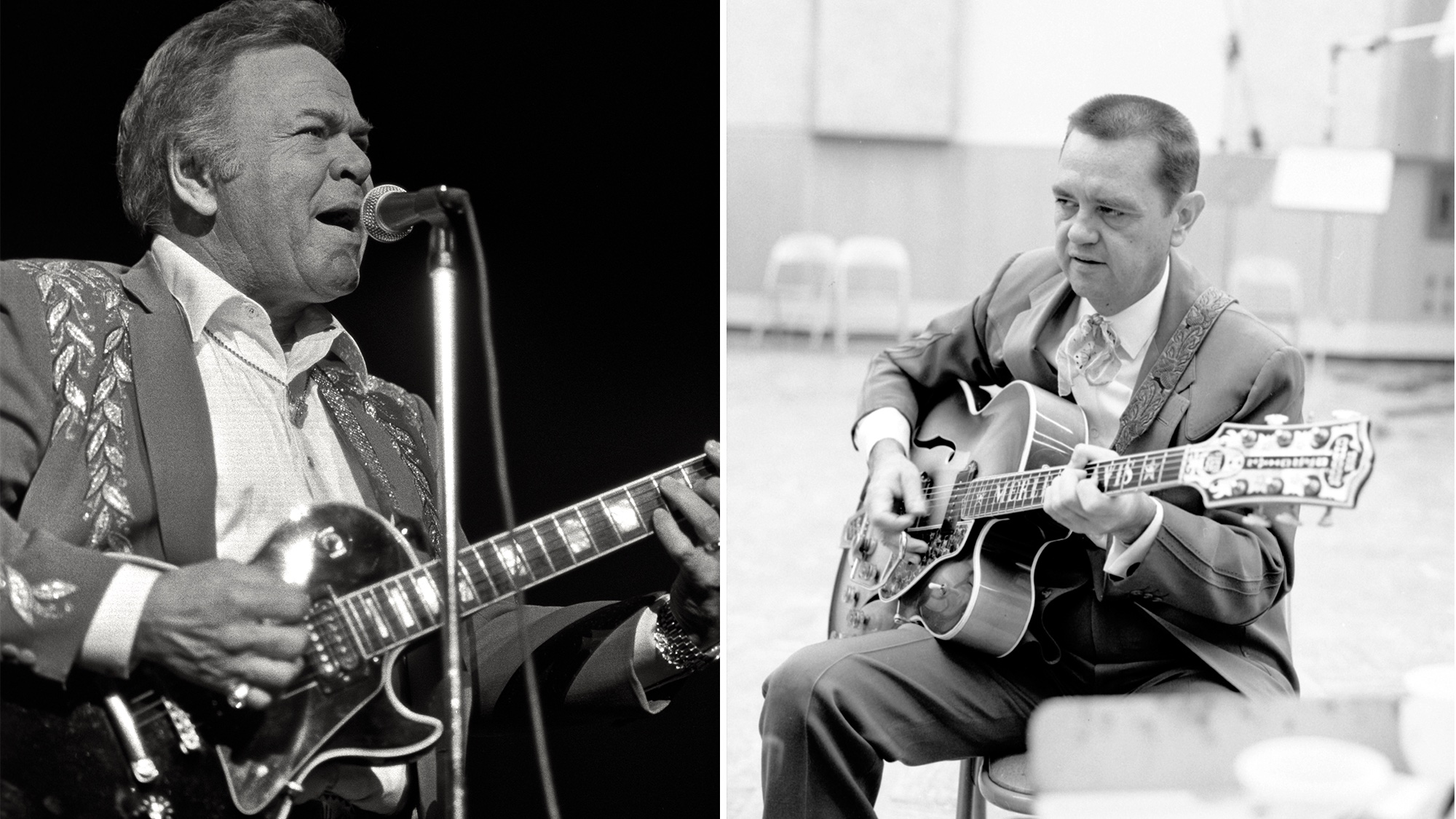Tom Morello Talks '90s Alternative and Nu-Metal

When it comes to the electric guitar, Tom Morello has been breaking the rules since his early days with Rage Against the Machine. The axman talks about the Nineties alt-rock revolution and his latest iconoclastic musical projects.
The early Nineties produced many guitar heroes, but perhaps no one had the impact of Tom Morello. As Rage Against the Machine’s axman, Morello displayed not only a strong grasp of metal and punk guitar riffage but also an idiosyncratic sense of tone and hypertechnical sonic mayhem. Using a range of effects, including a Dunlop Cry Baby, an Ibanez DFL Flanger and—most notably—a DigiTech Whammy Pedal, Morello produced otherworldly squeals, barnyard growls, and synthetic DJ scratch tones that were uncannily suited to Rage’s mash-up of metal, punk and hip-hop. On tracks like “Bulls on Parade,” “Killing in the Name” and “Renegades of Funk,” Morello pushed the boundaries of the instrument and the genre in which he worked his magic, influencing other musical innovators looking for new avenues of creative expression.
And to think it all started with the toggle switch on his Gibson Explorer. “Everyone else had those really cool Eddie Van Halen guitars with only one knob,” Morello says. “So I thought, I might as well make use of these knobs, since I can’t afford a different guitar right now. That was when I stumbled on the toggle switch. I combined it with a wah-wah pedal, and all of a sudden there was a noise that I had never heard a guitar player make. It sounded more like a sort of synthesizer.
“I went from having a sneaking suspicion to feeling certain that the odd guitar playing was my voice on the instrument, that it was the thing that I had in common with the guitar players I liked—a uniqueness. I just ran with that, and have been running with that ever since.”
When Rage began a seven-year hiatus in 2000, Morello continued to explore his instrument with Audioslave, featuring Soundgarden’s Chris Cornell, and even expanded his range on acoustic guitar in the guise of his alter ego the Nightwatchman. Rage have been back in action since 2007, but the Nightwatchman lives on—and is apparently evolving into something of an electric guitar hero on his latest album, which Morello has just finished mixing. Tentatively titled Worldwide Rebel Songs, it’s due out sometime in 2011.
“The first song has no acoustic guitar,” Morello says. “And it’s certainly the first Nightwatchman record with blazing Randy Rhoads–style solos. Of course, there are the dark murder ballads about retribution and bitterness that are the Nightwatchman’s stock in trade. But this time I just realized that I could loosen up and incorporate more of a complete picture of who I am.” He laughs. “It’s definitely not austere folk music.”
According to the guitarist, the new album was informed by his annual Axis of Justice benefit tour—where the motto is “Feed the Poor, Fight the Power, Rock the Fuck Out”—as well as his performances of “The Ghost of Tom Joad” live with Bruce Springsteen on a number of occasions throughout 2008 and 2009. “That was the first time I’d sung and played electric guitar,” Morello says of the latter. “It convinced me that I could do it.”
Get The Pick Newsletter
All the latest guitar news, interviews, lessons, reviews, deals and more, direct to your inbox!
The Nightwatchman isn’t all Morello’s up to: Street Sweeper Social Club, his rap-rock outfit with Boots Riley of the Coup, recently released an EP that includes covers of M.I.A.’s “Paper Planes” and “Mama Said Knock You Out” by LL Cool J. In addition, Rage just played their first-ever South American dates. “I couldn’t be more pleased with how we’re playing and getting along right now,” Morello says. “It’s great to have that be a positive part of my life.”
Morello took a break from his activities to talk with Guitar World about his varied roles as a guitarist and Rage Against the Machine’s role in the Nineties alt-rock revolution.
GUITAR WORLD Rage Against the Machine, Audioslave, Street Sweeper Social Club, the Nightwatchman… You seem to alternate between playing guitar with rappers and with singers. How are the two experiences different?
TOM MORELLO When you’re playing with an MC as opposed to a singer, the first difference is that you need to pay less attention to the harmonic interplay between the melody and the chord changes. You’re creating a sonic texture for someone to flow over, as opposed to chord changes for someone to make melodic choices against. That was actually one of the exciting challenges when we began Audioslave, because in Rage we’d written with a particular template that I think helped the band have a unique sound for a rock band: we rode the one in the same way that rap music and James Brown’s music do, then combined that with super-heavy riffs. We never worried, Is it a cliché to go to the fifth? We’d never go to the fifth; we’d just stay on the one the whole time for maximum power.
Audioslave gave me the chance to branch out and try new things, to be very conscious of the fact that there was a great singer singing over the top of everything. With Street Sweeper, it’s kind of a combination of the two. While Boots is a rapping MC, there are big vocal hooks that are sung by the band, as well. We consciously write music that will allow for choruses where we can sing our asses off.
GW How do you find room for guitar in a cover of a non-rock tune like “Paper Planes” or “Mama Said Knock You Out”?
MORELLO We wanted to turn “Paper Planes” on its head. I’d had the idea to do a cover on the tour that Street Sweeper did in 2009 with Nine Inch Nails and Jane’s Addiction, so I told Boots to give me some suggestions for some contemporary covers to slay the goth kids with. He suggested “Paper Planes” and some Justin Bieber songs; “Paper Planes” got the nod. My job was to recreate on the guitar that sonic background, which in M.I.A.’s song is made with lots of machinery. I had to bring that in an analogous way through a 50-watt stack.
GW When Rage reunited, did it take long for you guys to reestablish your chemistry?
MORELLO Rage is a creature unto itself. It’s like dusting off a Seventies muscle car with a huge engine that’s been sitting in the garage for a while. It might take a while to get the key to turn, but once it does, that motor is roaring.
GW Do you think the band’s music has changed since the end of the original run?
MORELLO Everything we’ve been doing is in the realm of live performance, so the music hasn’t really changed. But what has happened is that, if someone breaks a string or I need a few minutes to change guitars, the band will start playing on a brand-new groove. One thing about Rage was that we’ve always taken chances in the live setting, so it’s very much within us to be spontaneously creative. And when that does happen, all four of us are drawing on the abilities we’ve honed and the experiences we’ve had in the intervening years since 2000. With me it shows itself in the solo section of songs, in my willingness to take chances and go outside—sometimes well outside—the solos that appear on record. I’m constantly playing, whether it’s acoustic Nightwatchman shows, benefit jams with a variety of friends or Street Sweeper Social Club stuff, and a lot of new licks and tricks occur during those jams, which then filter their way into Rage performances.
GW We’re examining the Nineties at Guitar World this year. Rage was an undeniable part of the alt-rock explosion that defined that decade, yet the band’s relationship with the scene always seemed uneasy. Why?
MORELLO There was a frontline of artists who, for lack of a better term, we’ll call the Lollapalooza Nation: Rage, Tool, Jane’s Addiction, Nine Inch Nails, Soundgarden, Nirvana. Something those bands had in common is that we all mixed elements of classic hard rock with a punk rock ethos. We rejected the sterile, contrived parameters imposed by the record industry that brought us Eighties bands like Asia. Then, to our surprise, we found ourselves selling as many records as Poison and playing the same arenas. That caused a crisis of faith in all those bands, which is why you see Kurt Cobain killing himself, Pearl Jam going anti-Ticketmaster, and Nine Inch Nails, Tool and Rage taking four or five years between albums. These bands came out and created an audience but then didn’t serve that audience. So in a record company backroom you’ve got these cigar-smoking guys who’re like, “If only we had a band like Rage but who would show up for photo shoots and write a love song!” And there were plenty of candidates to fill that void in the second wave: the Creeds and the Limp Bizkits. Those bands had the same ambition as the hair-metal bands and were willing to play the game. They wanted the girls and the money and the success and, unlike us, were unburdened by guilt about that.
GW In your view, how is the record industry of the Nineties different from the record industry of today?
MORELLO The record industry has shrunk by something like two-thirds over the course of the last decade and a half. It used to be that a few gatekeepers—the major labels—had the big budgets to make the stars. Some artists would make it through that filter and get the big push from Sony or Warner Bros.—everyone from Rage and the Chili Peppers and Bush and the Rolling Stones. That’s how bands were forged. Now there are no budgets, or if there are it’s all put into the new Lady Gaga single. The labels aren’t trying to sell singles; they’re trying to sell ringtones.
GW Epic Records did pretty well by Rage Against the Machine.
MORELLO Our record company had both Rage and Pearl Jam, and neither band sold few records. But they saw the potential for Led Zeppelin numbers.
GW Were there advantages to that mindset that no longer exist today?
MORELLO While record companies have deservedly taken a lot of heat for the greed that preceded their fall—the consumer gouging, the artist gouging, all the bad karma that just built up over the years—it was those mechanisms that helped bring a lot of great music to the world. So in some ways we could be looking at the death of rock and roll with capital R's. As with the dinosaurs dying off, a myriad of new templates will come in to replace it. Music isn’t less important to people, but there will be less of the international superstar power that was created by those big companies.
GW Which strikes you how?
MORELLO It makes me feel very fortunate that with Rage and Audioslave we were able to make music we believed in, that was important to us, and that it was also able to reach a global audience. If a band like Rage Against the Machine came up today, there’s zero chance it would get the patience and the underwriting it took to break that band.
“Chuck Berry's not a very good guitar player. He's a clown. He runs all over the guitar, just like any one of these old rock players would do, and makes no sense”: Clarence “Gatemouth” Brown pulled no punches when speaking about his fellow guitar heroes
“I said, ‘Merle, do you remember this?’ and I played him his song Sweet Bunch of Daisies. He said, ‘I remember it. I've never heard it played that good’”: When Roy Clark met his guitar hero









